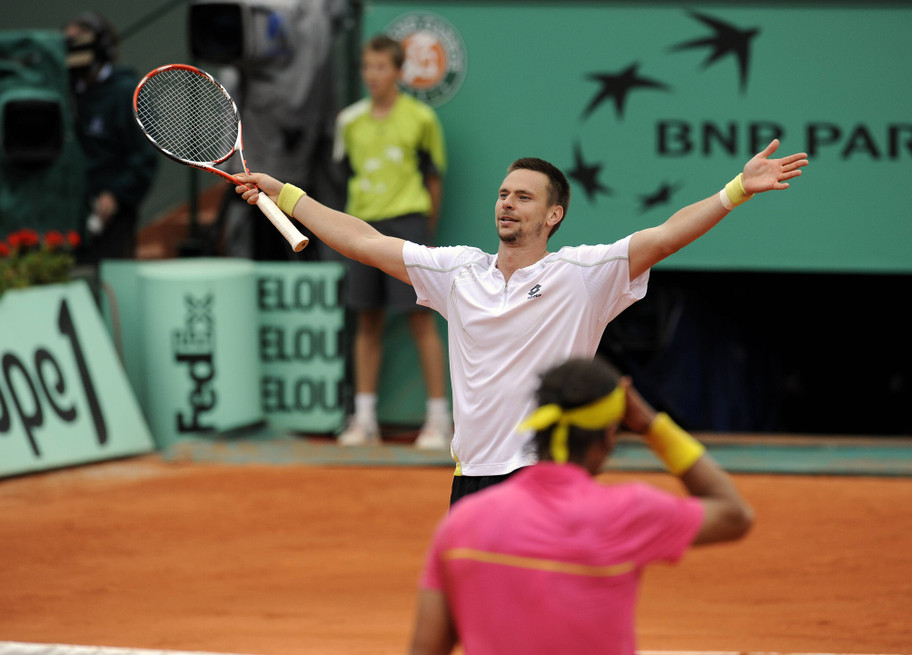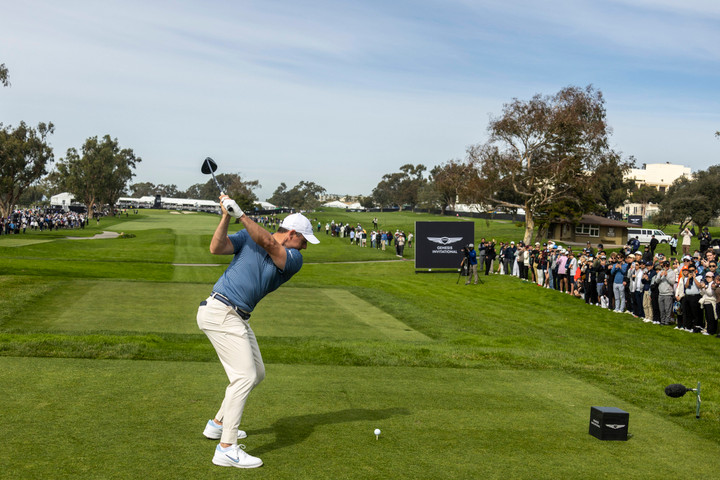Betting on tennis underdogs: The strategy of risk vs reward

In tennis, as in life, the underdog story captivates us. But beyond the emotional appeal, betting on tennis underdogs can be a lucrative strategy when approached with careful analysis and disciplined bankroll management.
By examining some of tennis's most memorable underdog victories, we can uncover valuable insights into identifying profitable betting opportunities. So how do you figure out the odds when it comes to betting on outsiders? How do you find the tennis ‘dark horse’ before anyone else does?
Love tennis? Find the best tennis betting sites and bet with welcome bonuses today.
The psychology of the underdog
Tennis has witnessed numerous David versus Goliath moments that have defied expectations. Before becoming the 'king of clay', Rafael Nadal himself was once considered an underdog. In 2004, as a 17-year-old, he stunned world No. 1 Roger Federer in their first-ever meeting at the Miami Open.
This match marked the beginning of arguably tennis's greatest rivalry and showcased how raw talent and fearless youth could overcome established dominance.
Nadal's early career, particularly his transition from being a rank outsider to becoming a dominant force on clay courts, exemplifies how quickly the odds can shift in tennis.
Another example comes from Robin Soderling's shock victory over Rafael Nadal at the 2009 French Open – a result that seemed like a longshot given Nadal's dominance on clay at that moment in time.
This match highlighted how mental fortitude can overcome seemingly insurmountable challenges, with Soderling maintaining unwavering focus despite Nadal's reputation and expertise.
Nadal (previously an underdog himself), became an established player who had to face the new kid on the block in a thoroughly entertaining match.
More recently, the mental aspect of tennis has taken centre stage. Young players have been increasingly open about their psychological struggles, changing how we evaluate matchups.
Emma Raducanu's extraordinary 2021 US Open victory as a qualifier exemplified how freedom from pressure can become a weapon. Without the weight of expectations, she played fearless tennis, defeating more experienced opponents who carried the burden of being favourites.
She stunned everyone with her grace on and off court and soon became a fan favourite and one the bookies would not underestimate again.
Key risk assessment factors
Modern tennis requires the players to be at their peak both physically and mentally, and understanding this is a key part of knowing how to bet on tennis.
Carlos Alcaraz's victory over Stefanos Tsitsipas at the 2021 US Open demonstrated how a player's confidence can override rankings. Though ranked lower, Alcaraz's ascending form and fearless mentality proved more valuable than Tsitsipas's higher ranking and established experience.
The reverse scenario played out in Lukas Rosol's stunning victory over Rafael Nadal at 2012 Wimbledon. Nadal, despite being the favourite, was struggling with knee issues and confidence, creating an opportunity that Rosol seized with aggressive play.
Sometimes, despite the odds, underdog players get wind in their sails and a perfect storm of physical form, mental fortitude and confidence can overcome years of success and experience.
Considering surface preferences
Player surface suitability is crucial in tennis betting analysis. Marketa Vondrousova's 2023 Wimbledon singles victory proved how an unseeded player’s game can suit a particular surface. Her adaptability to grass courts can outweigh overall rankings. Despite being unseeded, her left-handed play and slice-heavy game suited Wimbledon's grass courts perfectly.
Her story is even more of an unlikely one when we remember that just 12 months previously, with her playing wrist in a cast, she had come to London during the grass court season to cheer on friends in qualifying at Roehampton.
Back then she wondered whether she would ever be able to reproduce her previous peak form as runner-up to Ash Barty at Roland Garros in 2019.
Nick Kyrgios's defeat of Rafael Nadal at 2014 Wimbledon is another excellent case in point. The fast grass courts amplified Kyrgios's powerful serve and aggressive style, neutralising Nadal's typical baseline advantages.
Identifying valuable underdog opportunities
Successful underdog betting requires looking beyond basic statistics. For best results, bettors should consider assessing head-to-head records on specific surfaces to begin with. This can often be the difference when betting on grand slams versus non-grand slam events.
Recent form from the last 10 matches alongside performance against playing styles is also a key bit of research we recommend.
Finally, gather insights into tournament history and big court experience (think Arthur Ashe in New York, centre court at Wimbledon or Rod Lever Arena in Melbourne) to assess whether your chosen underdog might knock it out of the park based on previous stats and performance.
Tournament stage consideration
Early rounds often provide the best underdog opportunities. Lower-ranked players can catch top seeds before they find their rhythm, as seen in many of our example matches.
However, Vondrousova's 2023 Wimbledon run proved that underdogs can sustain performance through an entire tournament when conditions align perfectly.
Bankroll management and risk distribution
A sustainable approach to underdog betting requires careful bankroll management strategies that protect your bets while maximising potential returns.
The foundation of this approach lies in strict bet sizing discipline, with individual wagers limited to 1-3% of your total bankroll to ensure longevity and protect against inevitable losing streaks.
This conservative approach should be paired with strategic diversification across different tournaments and surfaces, spreading risk while taking advantage of varying playing conditions and competitive landscapes.
Advanced bankroll protection strategies include considering partial hedging (placing additional bets on the opposite outcome of your original wager) in later tournament stages, particularly when an underdog has already provided significant value through earlier rounds.
Throughout this process, maintaining detailed records and analysing betting results becomes crucial for long-term success, allowing you to identify patterns, refine strategies, and optimise your approach based on concrete data rather than intuition alone.
Value identification
True value in underdog betting emerges from the careful identification of discrepancies between a player's actual chances of victory and how the betting market perceives them.
This gap between reality and perception often creates opportunities where the odds offered don't accurately reflect the true probability of an outcome.
Particularly in cases where favourites might be dealing with recent injuries that the market hasn't fully accounted for, or when underdogs are showing marked improvement that hasn't yet been reflected in their odds.
The key to long-term success
Some of the most profitable opportunities arise when surface specialists compete at their preferred tournaments, where their specific skill set might be undervalued by the general market. Think Federer on grass and Nadal on clay courts.
Similarly, young players on rapid improvement trajectories often present excellent value. As the betting markets typically lag behind in adjusting to their accelerated development, creating a window where their true capabilities exceed their perceived chances of success.
Betting on tennis underdogs requires a delicate balance of risk assessment, statistical analysis and disciplined bankroll management.
The examples we've examined demonstrate that valuable opportunities exist, but continued success demands thorough research and emotional control.
Recent trends suggest that mental resilience and surface specialisation is becoming even more critical than traditional rankings. Young players are also increasingly capable of producing upset victories, particularly in early tournament rounds.
While underdog betting carries notable risks, a systematic approach focused on value identification and proper bankroll management can lead to sustainable long-term returns.
The key lies in viewing each bet not as a singular event, but as part of a broader strategy based on thorough analysis and disciplined execution.






 The six key strategies to nailing your golf betting picks
The six key strategies to nailing your golf betting picks
 Can Arsenal’s failing Premier League title bid ignite a Champions League charge?
Can Arsenal’s failing Premier League title bid ignite a Champions League charge?
 Super Bowl LIX preview: Kansas City Chiefs vs Philadelphia Eagles
Super Bowl LIX preview: Kansas City Chiefs vs Philadelphia Eagles
